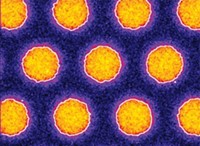Advertisement
Grab your lab coat. Let's get started
Welcome!
Welcome!
Create an account below to get 6 C&EN articles per month, receive newsletters and more - all free.
It seems this is your first time logging in online. Please enter the following information to continue.
As an ACS member you automatically get access to this site. All we need is few more details to create your reading experience.
Not you? Sign in with a different account.
Not you? Sign in with a different account.
ERROR 1
ERROR 1
ERROR 2
ERROR 2
ERROR 2
ERROR 2
ERROR 2
Password and Confirm password must match.
If you have an ACS member number, please enter it here so we can link this account to your membership. (optional)
ERROR 2
ACS values your privacy. By submitting your information, you are gaining access to C&EN and subscribing to our weekly newsletter. We use the information you provide to make your reading experience better, and we will never sell your data to third party members.
Analytical Chemistry
Fine-Tuning Catalysts
Electron donors control geometry of Ziegler-Natta structures
by Mitch Jacoby
June 30, 2008
| A version of this story appeared in
Volume 86, Issue 26

ELECTRON-DONOR components of commercial Ziegler-Natta polymerization catalysts dictate the structure of the catalyst's active site, according to a new study (J. Catal. 2008, 257, 81). The study provides new avenues for probing details of catalytic reaction mechanisms and may lead to more active and chemically selective catalysts for tailoring molecular properties of polymers.
Ziegler-Natta catalysts drive commercial polyolefin production. They consist of titanium tetrachloride supported on magnesium dichloride crystallites and include aluminum alkyl cocatalysts and organic electron-donor compounds. Although the well-studied catalytic materials mediate polyethylene and polypropylene production on an industrial scale, some aspects of the catalytic system remain poorly understood.
For example, researchers have speculated that the electron-donor compounds may play a role in enhancing polymerization by controlling the geometry of MgCl2 crystals and the orientations of their external surfaces. That proposal is based on the fact that although all of a crystal's facets are similar in chemical composition, subtle differences in their structures often lead to vast differences in their catalytic properties. In the case of Ziegler-Natta catalysts, little evidence has been available until now of the cause-and-effect relationship between electron donors, crystal geometry, and polymerization.
By using microscopy methods to monitor catalyst preparation and olefin polymerization, Hans J. W. Niemantsverdriet, Adelaida Andoni, and Peter C. Thüne of Eindhoven University of Technology, in the Netherlands, and coworkers obtained images that establish that relationship.
Specifically, the team showed that polymerization occurs strictly along the perimeter of the crystals (like the narrow edge of a coin) and that the nature of the electron donor dictates the structure of these catalytic hot spots. For example, diethers lead exclusively to hexagonal crystals with 120º edge angles and so-called (110) edge facets, which are active and stereoselective catalytic surfaces. In contrast, monoesters and diesters lead to square and hexagonal crystals (90º and 120º edge angles) and a combination of (110) and (104) edge facets, reducing catalytic activity and broadening the molecular weight distribution of the polymer.




Join the conversation
Contact the reporter
Submit a Letter to the Editor for publication
Engage with us on Twitter